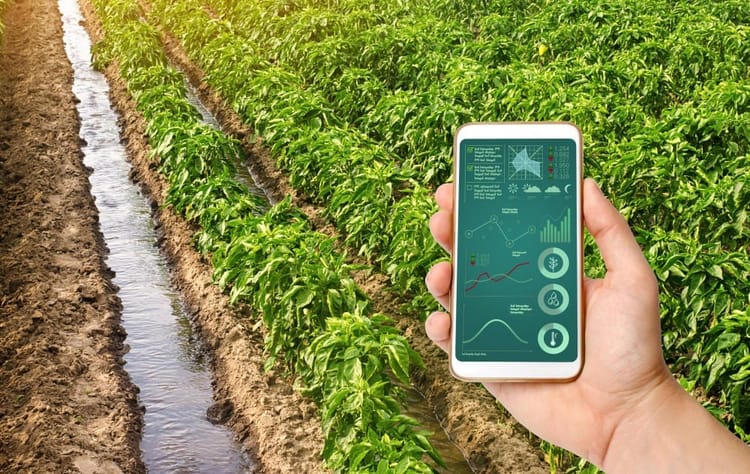The Impact of Digital Farming on Sustainable Agricultural Practices
Precision agriculture – what is it and what’s out there
Precision agriculture refers to the use of technology that helps farmers to manage their fields in a more precise and accurate manner.
A Simpler Way to Manage Precision Irrigation : We get it. Managing irrigation and fertigation for multiple plots, in changing weather, soil and crop conditions, can be complicated, and time consuming.
That’s why we created GrowSphere™, the first operating system (OS) for precision irrigation. GrowSphere™ is a simple, intuitive and visual digital farming work tool that helps you plan and execute your irrigation plans with greater reliability, transparency, and less effort.
These technologies include:
- Precision agriculture technology to predict and monitor crop yields.
- Sensors that can measure a variety of field parameters.
- Remote sensing, such as satellite imagery data to detect problems in the field and monitor field performance.
- Decision support software tools.
- Robotics – precision application of inputs, such as fertilizers, pesticides and seeds.
Until recently, there was a distinction between digital farming and precision agriculture. While digital farming encompassed all the above technologies, precision agriculture referred to technologies that allow to divide large fields to “management zones”, based on the variations in the field, and manage each zone individually, rather than refer to the whole field as one uniform unit.

In-field sensors are widely used in precision agriculture
Precision agriculture uses sensors to gather critical field data in real-time. These sensors help farmers make informed decisions on irrigation, fertilization, and crop management. Key sensors include:
- Soil Moisture Sensors: Measure moisture levels to optimize irrigation and conserve water.
- Soil Electrical Conductivity Sensors: Gauge soil salinity, crucial for managing irrigation and fertilization.
- Nitrogen Probes: Monitor nitrogen levels to guide fertilization, ensuring optimal plant health.
- Soil Temperature and pH Sensors: Monitor soil conditions to enhance crop growth and nutrient availability.
- Air Temperature and Humidity Sensors: Measure environmental conditions that affect crop health.
- Plant Sensors: Monitor plant health and water uptake, helping identify stress early.
By integrating these sensors into farming systems, farmers can monitor crops more effectively, reducing waste and increasing productivity.
Remote Sensing in Precision Agriculture (h4 tag)
Satellites and drones provide aerial views of fields, detecting issues like pests, diseases, or nutrient deficiencies that may be hard to spot from the ground. These tools enable farmers to make timely interventions, preventing crop loss and optimizing growth.
Decision-support software (h4 tag)
Data collected from sensors and remote sensing tools need to be analyzed for actionable insights. Decision-support software (DSS) tools help farmers analyze this data to make better decisions on irrigation, planting, fertilization, and pest management.
What´s next in precision agriculture (h4 tag)
The future of precision agriculture involves greater technology integration and real-time decision-making. Key developments include:
Data Integration: Unified platforms will connect data from sensors, drones, satellites, weather stations, and farm machinery, providing farmers a comprehensive view of their operations.
- AI and Big Data: Machine learning and AI will analyze vast data sets to predict outcomes and optimize farming practices, helping farmers with decisions on planting, irrigation, and fertilization.
- Autonomous Machinery and Robotics: Tractors, drones, and robots will carry out tasks such as applying water, fertilizers, and pesticides with minimal human intervention, reducing waste and increasing efficiency.
- 5G and IoT Expansion: IoT devices will gather data on soil health and crop growth. 5G will allow faster and more reliable data transfer, enabling better real-time decision-making.
Remote Sensing Advancements: Satellite and drone technology will become more advanced, offering high-resolution images and real-time monitoring of crop health, soil conditions, and potential issues.
- Sustainability and Circular Economy: Precision agriculture will support sustainable practices by reducing waste, lowering carbon footprints, and improving soil health. Technologies will also promote the use of organic waste for bioenergy and fertilizer.
Digital Twins of Farms
Digital twins are virtual models of farms that allow farmers to simulate various farming scenarios. This technology will help farmers make data-driven decisions on irrigation, planting, and pest management.
Conclusion
The future of precision agriculture lies in integrating various technologies, from sensors and drones to AI and remote sensing. These innovations will improve efficiency, sustainability, and productivity while reducing waste. However, challenges remain, such as ensuring that these technologies are affordable and accessible to farmers of all sizes. As these technologies evolve, farmers will be better equipped to address global challenges such as food security, climate change, and resource management.


COMMENTS
We'd love to hear your thoughts! To enter a comment, type your name and email address.